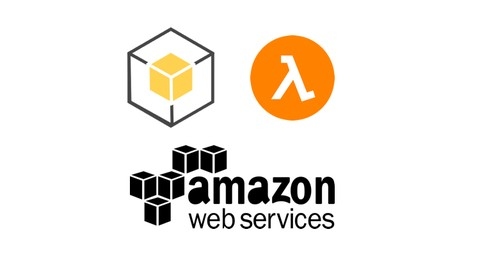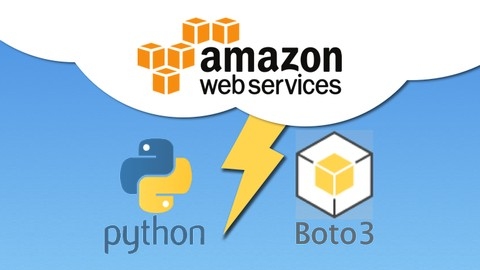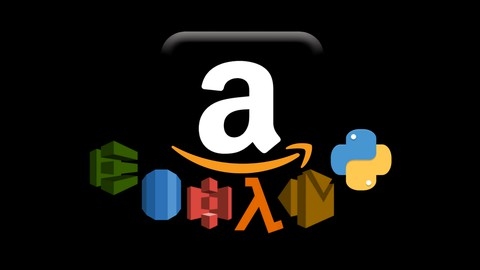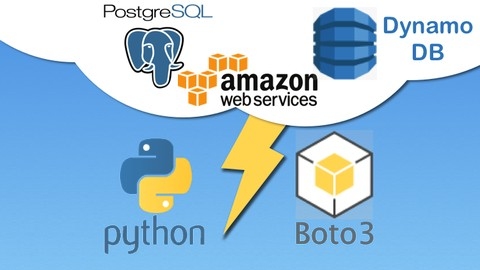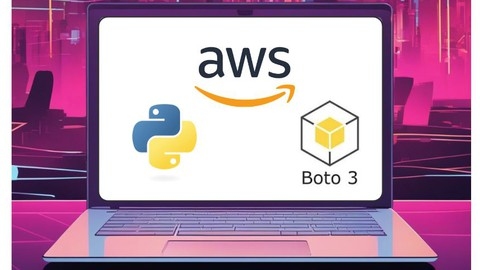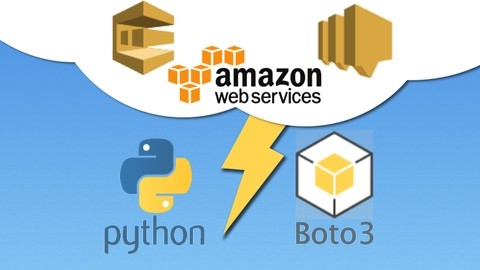Boto3 is the AWS SDK for Python, providing a powerful and flexible way to interact with Amazon Web Services programmatically.
With Boto3, you can automate tasks, manage resources, and build sophisticated applications that leverage the vast capabilities of the AWS cloud.
Learning Boto3 opens doors to a wide range of possibilities for developers, DevOps engineers, and anyone working with AWS.
By mastering Boto3, you can streamline your workflows, improve efficiency, and unlock the full potential of AWS services.
Finding a comprehensive and well-structured Boto3 course can be challenging, especially with the abundance of options available online.
You’re looking for a course that not only covers the fundamentals but also delves into advanced concepts and provides practical examples to solidify your understanding.
You want a course that’s engaging, easy to follow, and taught by experienced instructors who can guide you through the intricacies of Boto3.
Based on our research and analysis, we believe AWS - Mastering Boto3 & Lambda Functions Using Python is the best Boto3 course on Udemy overall.
This course offers a comprehensive exploration of Boto3, covering everything from basic interactions with AWS services to advanced topics like Lambda functions, DynamoDB, and S3.
It provides a perfect blend of theory and practice, with hands-on exercises and real-world examples to reinforce your learning.
However, this is just one of the many excellent Boto3 courses available on Udemy.
We understand that different learners have different preferences and requirements.
To help you find the perfect course for your needs, we’ve compiled a list of other top-rated Boto3 courses, each with its own unique strengths and focus areas.
Let’s explore these options and find the best fit for your Boto3 learning journey.
AWS - Mastering Boto3 & Lambda Functions Using Python
This course provides a comprehensive exploration of AWS, focusing on the powerful tools of Boto3 and Lambda functions.
You’ll gain a strong foundation in using Boto3, the Python library for interacting with AWS services, to manage resources like EC2 instances and EBS volumes.
You’ll also delve into AWS Lambda, the serverless compute service that empowers you to execute code without managing servers.
The course starts by laying the groundwork with Python fundamentals, guiding you through setting up your environment with Python 3.x and Pycharm IDE on Mac OS.
You’ll acquire the essential Python skills needed to perform a wide range of operations on EC2 instances, including launching, starting, stopping, and terminating them, as well as describing and filtering them.
Moving to Lambda, you’ll explore its core concepts and understand how it functions within a serverless architecture.
You’ll gain practical experience in creating, managing, and optimizing Lambda functions, learning techniques for performance tuning, memory and CPU management, and even running Lambda functions within a VPC.
You’ll also master the art of managing Lambda versions and aliases, creating deployment packages, and sending Slack notifications.
You’ll discover the power of Lambda layers for effective management of external dependencies.
You’ll learn how to pass environment variables to Lambda functions, including methods for encrypting sensitive data.
You’ll gain the ability to schedule Lambda functions, such as automatically processing JSON files uploaded to S3 and storing them in DynamoDB, or finding unused volumes and sending email notifications.
You’ll also dive into the world of DynamoDB with Boto3, exploring concepts like items, attributes, partition keys, and read and write capacity.
You’ll be equipped to perform a variety of operations in DynamoDB, including creating, getting, deleting, and batch writing items.
Finally, you’ll master S3 operations, including creating buckets, uploading and deleting files, listing objects and buckets, and even leveraging S3 Select to extract specific rows and columns from CSV files stored in S3.
This course is packed with practical examples and hands-on exercises, ensuring you gain the skills and knowledge needed to confidently leverage Boto3 and Lambda in your AWS projects.
Python Programming for AWS - Learn Python with AWS and Boto3
You’ll begin by setting up your AWS Free Tier account and getting familiar with AWS fundamentals, including essential services like IAM, EC2, S3, VPC, and RDS.
You’ll gain hands-on experience launching EC2 instances, managing S3 buckets, and working with RDS databases.
The course then introduces you to the world of Python programming.
You’ll learn about variables, data types, loops, functions, and exception handling, providing you with a solid foundation for interacting with AWS services using code.
The course then dives into Boto3, the AWS SDK for Python.
You’ll learn how to configure Boto3, navigate its documentation, and use it to interact with various AWS services.
The hands-on labs will give you practical experience managing S3 buckets, launching EC2 instances, creating VPCs, and working with RDS.
You’ll then explore AWS Lambda, a serverless computing service, and discover how to automate tasks using Python.
You’ll gain experience creating and managing Lambda functions to automate tasks related to EC2, S3, RDS, and VPC.
The course provides numerous hands-on labs to solidify your understanding of Lambda.
Finally, you’ll delve into advanced AWS services such as SNS, SQS, SES, Glue, and EMR.
You’ll learn how to integrate these services into your Python applications, opening up a world of possibilities for building sophisticated cloud solutions.
You’ll also learn how to automate security auditing tasks, strengthening your understanding of AWS security best practices.
The course concludes by introducing you to tools like CodeCommit, ChatGPT, and GitHub Copilot, which can enhance your Python and AWS development workflow.
Managing EC2 and VPC: AWS with Python and Boto3 Series
You will learn how to programmatically create and manage VPCs, subnets, route tables, internet gateways, security groups, key pairs, and EC2 instances using Python and the Boto3 library.
The course starts by setting up the development environment on Windows and MacOS, ensuring you have the necessary tools like Python, Boto3, and the AWS CLI installed and configured.
With PyCharm IDE, you’ll benefit from auto-complete magic, making coding with Boto3 a breeze.
Next, you’ll dive into creating a VPC and adding an internet gateway.
You’ll learn how to create public and private subnets, associate route tables, and enable auto-assign public IP addresses.
Moving on to EC2, you’ll create key pairs and security groups, then launch EC2 instances in both public and private subnets.
You’ll even create a startup script to automate instance configuration.
After launching the infrastructure, you’ll connect to the public instance and verify the private instance’s accessibility.
You’ll also learn how to describe, modify, stop, start, and terminate EC2 instances programmatically.
This level of control over your AWS resources is invaluable.
Throughout the course, you’ll follow along with the instructor as they demonstrate each step in the AWS console, giving you a visual representation of what you’re building.
AWS Lambda, Python(Boto3) & Serverless- Beginner to Advanced
This course on AWS Lambda, Python (Boto3), and serverless architectures will teach you how to build and deploy powerful applications without managing physical servers.
You start with the basics of AWS Lambda, learning how it evolved from traditional servers.
You quickly move into hands-on experience using the Lambda console and Python’s Boto3 library to directly manage AWS services like S3, EC2, and DynamoDB.
You learn to build REST APIs with API Gateway, connecting them to your Lambda functions and exposing your applications to the world.
The course covers important security considerations, teaching you how to implement authentication and authorization using Cognito and Lambda authorizers.
You even explore the exciting world of Generative AI by creating intelligent applications with AWS Bedrock.
This course takes you beyond the basics by diving into advanced Lambda concepts like concurrency, memory management, and networking within a VPC.
You discover how to monitor and log your Lambda functions effectively using CloudWatch and manage them through versioning and aliases.
The course also introduces you to powerful infrastructure-as-code tools like AWS Cloud Development Kit (CDK) and CloudFormation, making your serverless applications more manageable and scalable.
Amazon Web Services (AWS) with Python & Boto3
This course propels you from AWS fundamentals to sophisticated cloud deployments using Python and the Boto3 library.
You begin by mastering IAM, enabling you to create users, groups, and policies, which are the bedrock of securing your cloud environment.
You gain practical experience writing Python scripts with Boto3 to control access, illustrating how to create, update, and delete users, groups, and policies programmatically.
You then delve into the heart of AWS services, including S3 for scalable object storage, DynamoDB for NoSQL database management, and EC2 for launching and managing virtual machines in the cloud.
You learn to interact with these services seamlessly using Python and Boto3, acquiring skills to upload files, manage databases, and control cloud infrastructure.
You discover RDS, allowing you to work with relational databases like MySQL, PostgreSQL, and MariaDB, and you gain proficiency in setting up instances, crafting databases, and executing CRUD operations, all through elegant Python code.
Finally, this course equips you with the tools to build and deploy your own cloud applications.
You explore the power of Lambda functions, allowing you to run code without managing servers, and you harness CloudFormation to define and manage your infrastructure as code using Python.
You then dive into Elastic Beanstalk, a service that simplifies deploying web applications like Django and Flask, providing a streamlined path to take your applications from development to production.
RDS PostgreSQL and DynamoDB CRUD: AWS with Python and Boto3
You’ll start by setting up your development environment, installing necessary tools like Python, AWS CLI, and Boto3 on Windows or MacOS.
For the RDS part, you’ll learn to create a security group, DB subnet, and launch an RDS instance.
You’ll then connect to the instance using psycopg2 and perform CRUD operations like creating tables, inserting, reading, updating, and deleting data.
The DynamoDB section begins with setting up a local DynamoDB environment.
You’ll create tables, write data by putting and updating items conditionally or unconditionally.
For reading data, you’ll learn querying, scanning, and conditionally querying items.
The course uses PyCharm IDE for coding exercises.
Throughout the course, you’ll work with key AWS services like RDS, DynamoDB, security groups, and subnets.
You’ll gain hands-on experience with Python, Boto3 library, psycopg2 for PostgreSQL, and AWS CLI.
The course covers essential concepts like connecting to databases, handling credentials, and performing CRUD operations on both SQL and NoSQL databases using Python.
Master AWS with Python and Boto3
This course takes you on a journey, from the foundations of AWS and Boto3 to building a sophisticated media server.
You begin with Boto3 basics: setting up your AWS environment, interacting with S3 for data storage, and mastering core concepts like paginators and waiters for handling large datasets.
You then dive into the critical domain of security and access control with IAM, using Boto3 to manage users, groups, and permissions.
You will then explore EC2, learning to launch, manage, and even remotely connect to virtual servers using SSH through Paramiko.
Your journey through the world of AWS continues with DynamoDB.
You’ll gain proficiency in performing CRUD operations, managing data with batch operations, and leveraging global secondary indexes for optimized data retrieval.
You’ll harness the power of serverless computing with Lambda, building and deploying scalable functions triggered by events.
Finally, you will put your knowledge into practice with a capstone project.
This project challenges you to build a media server, integrating various AWS services.
You’ll learn to analyze images with Rekognition, convert text to speech using AWS Polly, transcribe speech to text with AWS Transcribe, and even extract text and data from documents using AWS Textract.
Working with SQS and SNS: AWS with Python and Boto3 Series
This course teaches you how to use Boto3, which is Python code, to work with Amazon Web Services (AWS).
Specifically, you’ll learn about SQS and SNS.
You begin by setting up your computer with all the tools you need, whether you have a Windows or MacOS.
You will install Python 3 and the AWS SDK, so you can write code that talks to AWS.
The course uses PyCharm to help you write your code, but you could use other tools if you prefer.
Once you’re set up, you dive into SQS.
You learn how to create different types of queues, like FIFO queues that keep messages in order and dead-letter queues for messages that fail to be processed.
You’ll learn how to send messages to these queues and then get them back out again.
You also learn how to manage these queues, changing their settings and even deleting them.
Then, you move on to SNS.
You’ll discover how to create topics, which are like channels for messages.
You can send messages to these topics, and anyone who subscribes will receive them.
You’ll learn how to subscribe using email, text messages, or even another SQS queue.
You also discover how to manage these subscriptions and control who receives messages.
By the time you finish, you’ll be comfortable using Boto3 to automate your work with SQS and SNS.

